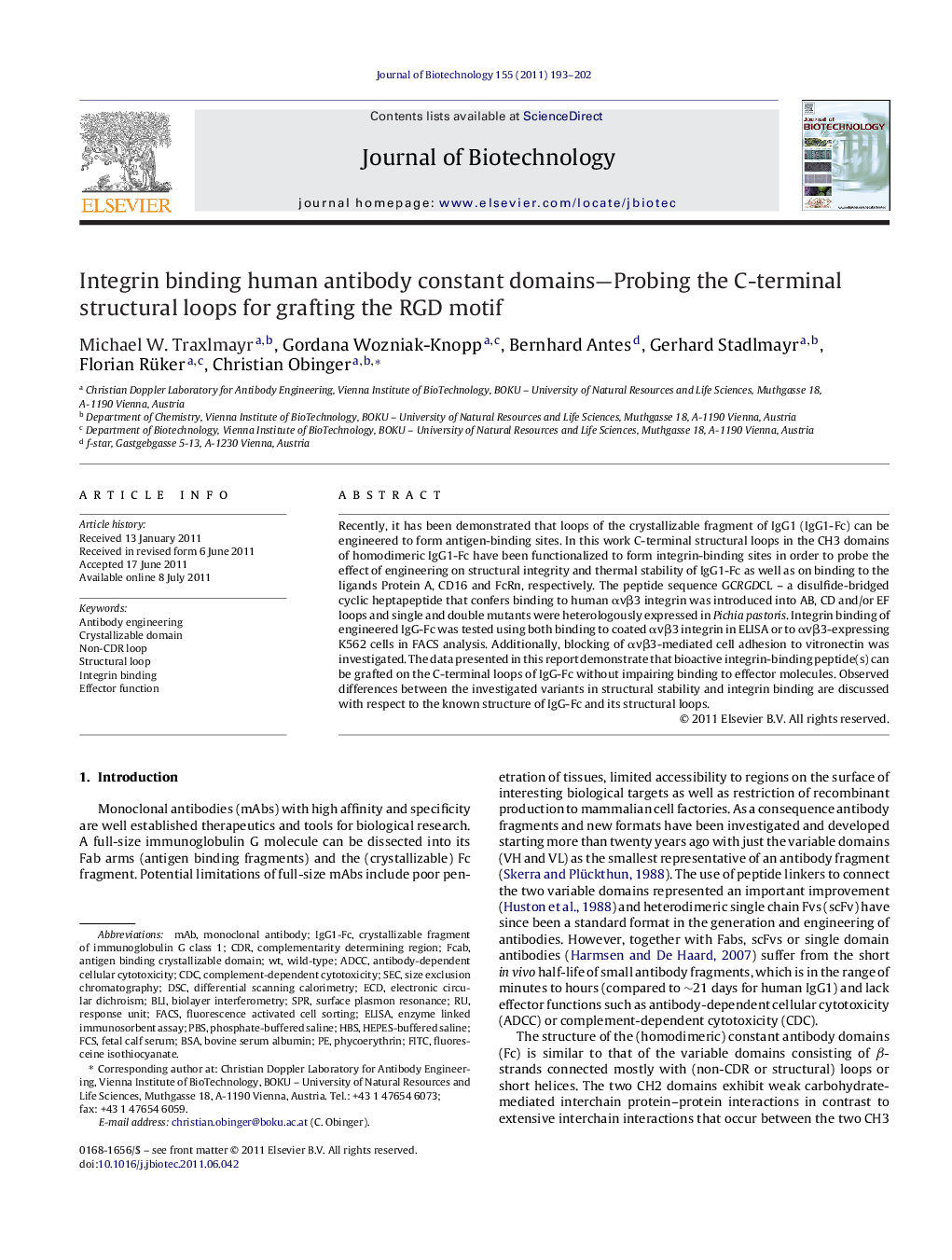| Article ID | Journal | Published Year | Pages | File Type |
|---|---|---|---|---|
| 23719 | Journal of Biotechnology | 2011 | 10 Pages |
Recently, it has been demonstrated that loops of the crystallizable fragment of IgG1 (IgG1-Fc) can be engineered to form antigen-binding sites. In this work C-terminal structural loops in the CH3 domains of homodimeric IgG1-Fc have been functionalized to form integrin-binding sites in order to probe the effect of engineering on structural integrity and thermal stability of IgG1-Fc as well as on binding to the ligands Protein A, CD16 and FcRn, respectively. The peptide sequence GCRGDCL – a disulfide-bridged cyclic heptapeptide that confers binding to human αvβ3 integrin was introduced into AB, CD and/or EF loops and single and double mutants were heterologously expressed in Pichia pastoris. Integrin binding of engineered IgG-Fc was tested using both binding to coated αvβ3 integrin in ELISA or to αvβ3-expressing K562 cells in FACS analysis. Additionally, blocking of αvβ3-mediated cell adhesion to vitronectin was investigated. The data presented in this report demonstrate that bioactive integrin-binding peptide(s) can be grafted on the C-terminal loops of IgG-Fc without impairing binding to effector molecules. Observed differences between the investigated variants in structural stability and integrin binding are discussed with respect to the known structure of IgG-Fc and its structural loops.
► We grafted the RGD-motif on the structural loops of the CH3 domains of IgG1-Fc. ► Loop engineered IgG1-Fc mutants bound to avb3 integrin. ► Structural integrity and thermal stability of loop engineered mutants were analyzed. ► Binding of loop engineered IgG1-Fc-variants to FcRn, CD16 and Protein A was analyzed.
